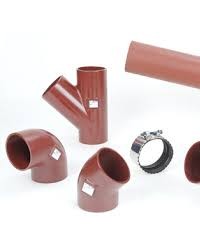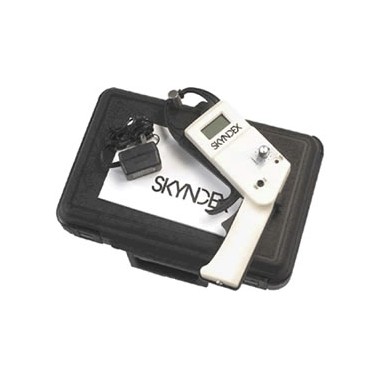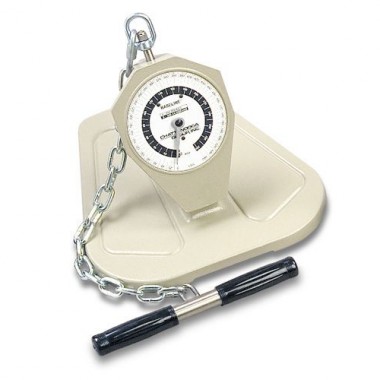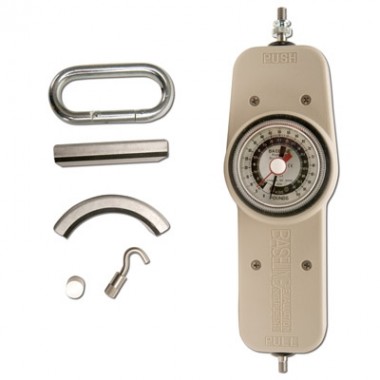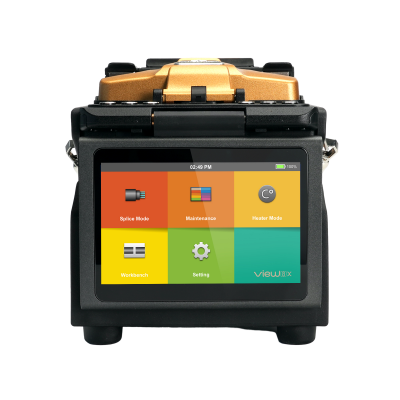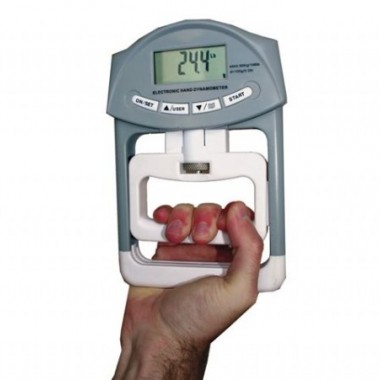
Thermocouple Extension and Compensating Cables
Update Terakhir
23-11-2019
Dilihat Sebanyak
2 kali
Lokasi
DKI Jakarta - Jakarta Timur
Harga
Kontak Kami
Bagikan
+ Penawaran
Perhatian!
Perusahaan ini terdaftar sebagai Free Member. Hindari melakukan pembayaran sebelum bertemu penjual atau melihat barang secara langsung. COD (Cash On Delivery) atau bertemu langsung dengan penjual merupakan metode transaksi lebih aman.
Spesifikasi Thermocouple Extension and Compensating Cables
Thermocouple Extension and Compensating Cables Supreme, Metal, Kabelindo, Tranka, Jembo, Lapp, Voksel, Eterna, Belden MIT.S.B , SUPER Thermocouples are suitable for measuring over a large temperature range, up to 2300 ° C. They are less suitable for applications where smaller temperature differences need to be measured with high accuracy, for example the range 0– 100 ° C with 0.1 ° C accuracy. For such applications thermistors and resistance temperature detectors are more suitable. Applications include temperature measurement for kilns, gas turbine exhaust, diesel engines, and other industrial processes. Types Certain combinations of alloys have become popular as industry standards. Selection of the combination is driven by cost, availability, convenience, melting point, chemical properties, stability, and output. Different types are best suited for different applications. They are usually selected based on the temperature range and sensitivity needed. Thermocouples with low sensitivities ( B, R, and S types) have correspondingly lower resolutions. Other selection criteria include the inertness of the thermocouple material, and whether it is magnetic or not. Standard thermocouple types are listed below with the positive electrode first, followed by the negative electrode. K Type K ( chromel– alumel) is the most common general purpose thermocouple with a sensitivity of approximately 41 µ V/ ° C, chromel positive relative to alumel. It is inexpensive, and a wide variety of probes are available in its 200 ° C to + 1350 ° C range. Type K was specified at a time when metallurgy was less advanced than it is today, and consequently characteristics vary considerably between samples. One of the constituent metals, nickel, is magnetic; a characteristic of thermocouples made with magnetic material is that they undergo a step change in output when the magnetic material reaches its Curie point ( around 354 ° C for type K thermocouples) . E Type E chromel constantan has a high output ( 68 µ V/ ° C) which makes it well suited to cryogenic use. Additionally, it is non-magnetic. J Type J ( iron– constantan) has a more restricted range than type K ( 40 to + 750 ° C) , but higher sensitivity of about 55 µ V/ ° C. The Curie point of the iron ( 770 ° C) causes an abrupt change in the characteristic, which determines the upper temperature limit. N Type N ( Nicrosil– Nisil) ( Nickel-Chromium-Silicon/ Nickel-Silicon) thermocouples are suitable for use at high temperatures, exceeding 1200 ° C, due to their stability and ability to resist high temperature oxidation. Sensitivity is about 39 µ V/ ° C at 900 ° C, slightly lower than type K. Designed to be an improved type K, it is becoming more popular. Platinum types B, R, and S Types B, R, and S thermocouples use platinum or a platinum– rhodium alloy for each conductor. These are among the most stable thermocouples, but have lower sensitivity than other types, approximately 10 µ V/ ° C. Type B, R, and S thermocouples are usually used only for high temperature measurements due to their high cost and low sensitivity. B Type B thermocouples use a platinum– rhodium alloy for each conductor. One conductor contains 30% rhodium while the other conductor contains 6% rhodium. These thermocouples are suited for use at up to 1800 ° C. Type B thermocouples produce the same output at 0 ° C and 42 ° C, limiting their use below about 50 ° C. R Type R thermocouples use a platinum– rhodium alloy containing 13% rhodium for one conductor and pure platinum for the other conductor. Type R thermocouples are used up to 1600 ° C. S Type S thermocouples are constructed using one wire of 90% Platinum and 10% Rhodium ( the positive or " + " wire) and a second wire of 100% platinum ( the negative or " -" wire) . Like type R, type S thermocouples are used up to 1600 ° C. In particular, type S is used as the standard of calibration for the melting point of gold ( 1064.43 ° C) . T Type T ( copper– constantan) thermocouples are suited for measurements in the 200 to 350 ° C range. Often used as a differential measurement since only copper wire touches the probes. Since both conductors are non-magnetic, there is no Curie point and thus no abrupt change in characteristics. Type T thermocouples have a sensitivity of about 43 µ V/ ° C. C Type C ( tungsten 5% rhenium – tungsten 26% rhenium) thermocouples are suited for measurements in the 0 ° C to 2320 ° C range. This thermocouple is well-suited for vacuum furnaces at extremely high temperatures. It must never be used in the presence of oxygen at temperatures above 260 ° C. M Type M thermocouples use a nickel alloy for each wire. The positive wire contains 18% molybdenum while the negative wire contains 0.8% cobalt. These thermocouples are used in vacuum furnaces for the same reasons as with type C. Upper temperature is limited to 1400 ° C. It is less commonly used than other types. Chromel-gold/ iron In chromel-gold/ iron thermocouples, the positive wire is chromel and the negative wire is gold with a small fraction ( 0.03– 0.15 atom percent) of iron. It can be used for cryogenic applications ( 1.2– 300 K and even up to 600 K) . Both the sensitivity and the temperature range depends on the iron concentration. The sensitivity is typically around 15 µ V/ K at low temperatures and the lowest usable temperature varies between 1.2 and 4.2 K. Type of Cables : • RT-2Y( St) Yv, RT-Y( St) Yv • RT-2Y( St) Yv PiMF, RT-Y( St) Yv PiMF • RT-2Y( St) YQY, RT-Y( St) YQY • RT-2Y( St) 2YSWAY, RT-Y( St) YSWAY • RT-2Y( St) 2YSWAY PiMF, RT-Y( St) YSWAY PiMF Applicable Standards : IEC, DIN, VDE, ANSI, JIS, .............. SPECIAL PRICE ! ! ...............
Fans Anugrah electric
FANS ANUGRAH ELECTRIC Distributor supplier General Contractor, Electrical, Panel Maker, AVR Genset Stamford AS440, Capasitor Nokian FL2D, Fuse Siba, Micom Schneider P127, Sepam Schneider, aksesories listrik .
FANS ANUGRAH ELECTRIC
FANS ANUGRAH ELECTRIC
http://alatlistrikmurah.net/
relay:
1. ALSTOM / AREVA
2. ARTECHE
3. Crompton
4. CIRCULOR
5. MICRO
6. MITSUBISHI
7. SIEMENS
8. SCHNEIDER
9. SEG
10.ABB
11. etc
FUSE:
1. SIBA
2. ETI
3. EFEN
4. GAE
5. BUSSMANN
6. JEAN MUELLER
7. etc
HOT / GROUNDING STICK:
1. RITS
2. AB CHENG / HUBBLE
3. NEW PATH
4. NIHON
5. JITAI
6. etc
Insulating:
1. RAYCHEM
2. 3M
3. Denson
4. Elastimold
5. COOPER
6. etc
ARESSTER / CT / VT / PT / Panel Cubicle / Panel ATS / TR Control Panel / LV, TM / MV, TT / HV, (IM-QM, SM6, DM1A), (Floukit):
1. TRAFINDO
2. UNINDO
3. CISCO
4. SCHNEIDER
5. RIK
6. UNEL
7. SIEMENS
8. NGK
9. NIHON
10. NOKIAN
11. LIFASA
12. etc
SEAFTY / PROTECTION:
1. YOTSUGI
2. Nomex
3. REGELTEX
4. ELSEC
5. etc
GENSET / PART / AVR:
1. CATERPILAR
2. CUMMINS
3. DEUTZ
4. DOOSAN
5. FOTON
6. KOMATSU
7. LOVOL
8. MAN
9. PERKINS
10. MITSUBISHI
11. YANMAR
12. STAMFORD
13. etc
Perumahan Malaka Caountry Estate, Jl. Malaka Biru VII. NO.10.
Jakarta Timur Indonesia.
EMAIL : fansanugrahelectric@gmail.com
Phohe / Fax : (021) 86616127 / 86616128
Mobile / Message / WhatsApp 0813 8423 9993
Fans Anugrah electric
Free Member
jl. malaka biru VII no.10 pondok kopi jakarta timur Indonesia
DKI Jakarta - Jakarta Timur
Login Terakhir 22-11-2019
021 - 86616127 - 86616128
+62 813-8423-9993
Produk Lainnya


